Twenty-five years after their debut, the SR-007 are still among the most enduring summit-fi headphones ever made.
A legend was born when the Stax SR-007 (or Omega 2) were first released in 1998.
Just five years earlier, the Japanese electrostatic audio manufacturer had pulled an Icarus-like stunt and released the SR-Omega, whose mesh stator rendered them almost impossible to manufacture reliably.
Although the SR-Omega were considered the manufacturer’s best-ever headphones at the time, the effort drove the company bankrupt.
And then, like a phoenix rising from the ashes, the company resurrected and released a successor to the SR-Omega – the Omega 2, or SR-007. They were an immediate hit, some even considering them better than their predecessors.
- Unmatched technical ability, far above expected for their price point
- Incredible vocal presentation
- Punchy yet very detailed bass
- Smooth, non-fatiguing, but very detailed treble
- Lush, inviting timbre
- Realistic staging and laser-sharp imaging
- Superior build quality
- Demands powerful amplification
- Rotating earcup system is a little weird
- Withdrawn upper midrange
Not only could they be manufactured reliably, but they boasted a warm sound signature unheard of from a manufacturer known for releasing primarily analytical, ultra-detailed headphones.
Since then, the SR-007 have endured as one of the few designs from the 1990s still considered relevant. The SR-007MK2, unveiled in 2007, introduced some slight changes, but the overall design was the same.
I reviewed the original SR-007 a few years back, and they quickly became my favorite pair of headphones ever. So when Stax offered a loaner unit of the modern production version, I was over the moon.
Company Overview
Japanese headphone manufacturer Stax was the first company to manufacture electrostatic headphones commercially. This year, they celebrate their 85th anniversary.
This company has a long history and has never strayed from its core business model. Since releasing their first products, they’ve maintained an undisputed position as a market leader regarding sonic qualities like detail and low distortion.
Technical Specifications
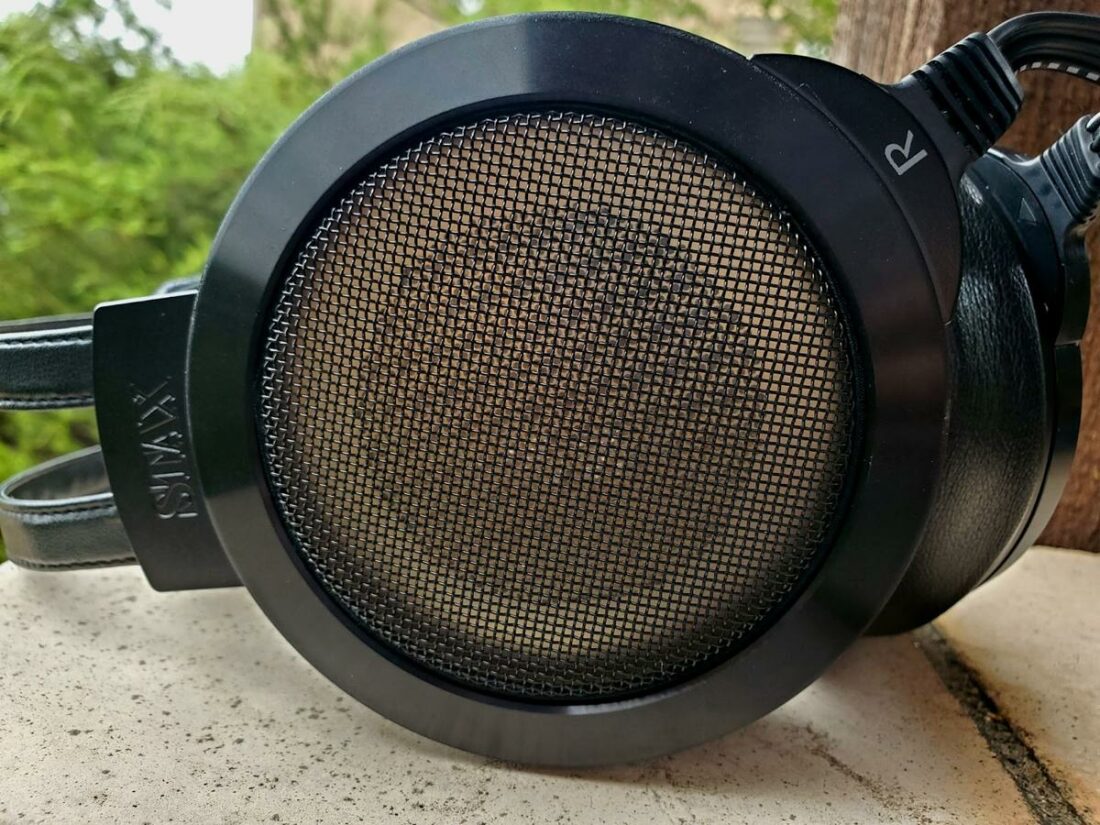
- Form: Over-ear, open-back
- Driver: Electrostatic
- Impedance: 170 kΩ
- Capacitance: 94 pF (including cable)
- Sensitivity (dB): 100 dB / 100 V r.m.s. @ 1 kHz
- Bias: 580 V DC
- Removable Cable: No
- Source Plug: 5-pin Stax pro-bias
- Weight (g): 366 g without cable, 499 g with cable
Design
The SR-007MK2 are a classy all-black affair, but the SR-007A, the equivalent in Japan, bring a touch of silver to the metal part of the earcup.
The SR-007MK2 are built excellently, with premium materials – aluminum for the earcup, leather for the earpads and headband arc – and a robust construction.
The cables are not removable, but this is a common feature of electrostats, where the high operating voltage makes a removable cable an iffy prospect, especially as it might damage the headphones.
The headphones come in a very official-looking flight case (pictured below). Beyond this, there’s essentially nothing in the way of accessories – not that we need much more than the headphones themselves.
Comfort
As a company, Stax seems incapable of making regular headphones.
So, while the SR-007 may look relatively normal, their design is somewhat unconventional.
New users will take a while to get used to the rotating earcups. That’s right: unlike normal headphone earcups that rotate on the Y and Z axes, the earcups of the SR-007 only rotate on the X-axis (i.e., they spin around your ears).
This allows for some adjustment, as you can place the thick parts of the pads behind your ears, or wherever appropriate to get a good fit, but adjustment is limited. This is fine for me, as the headphones conform well to my head, but some have comfort issues and resort to aftermarket accessories to get the right fit.
Provided one gets a good fit, the SR-007MK2 are reasonably light, and the gentle clamp force makes them very comfortable to wear for hours.
SR-007MK2 Sound
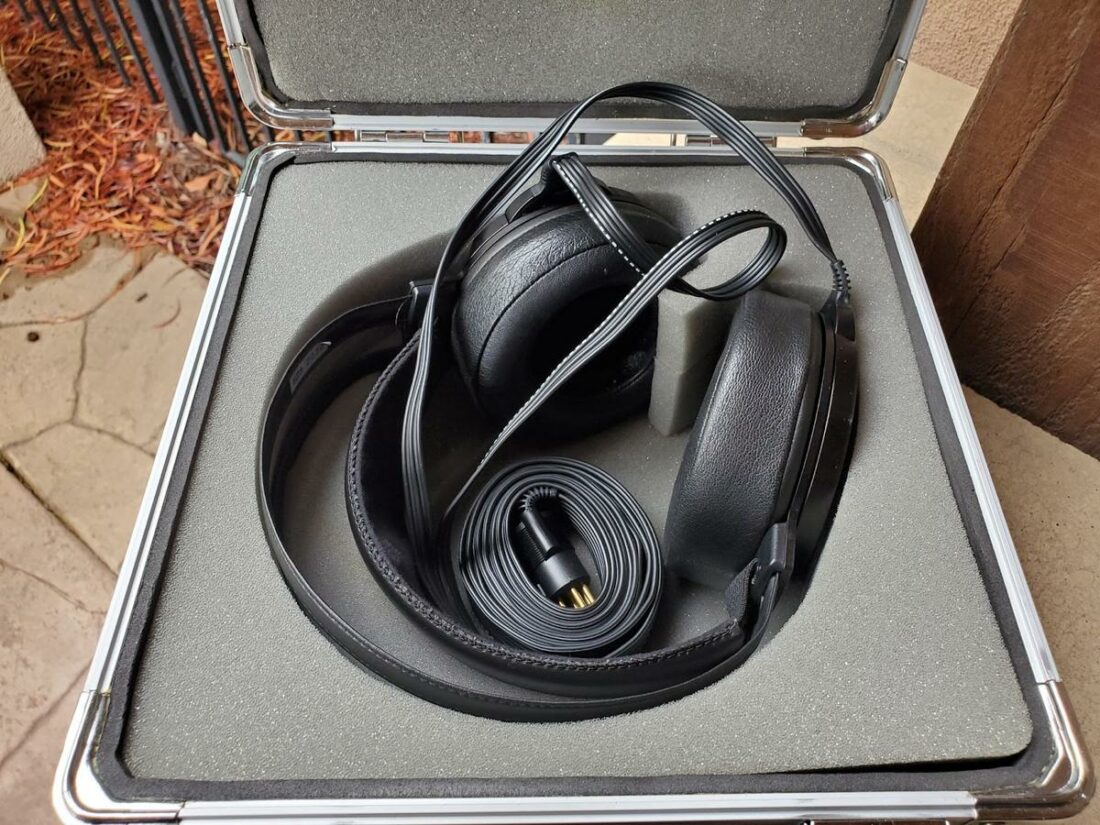
Like many of the greatest headphones, the superior sound quality of the current version of the SR-007(dubbed the MK2.9 by enthusiasts) is not immediately evident when you put them on.
While Stax’s other headphones stun with an ultra-clear sound, a vast soundstage, or detail that’s pushed into the foreground, the SR-007 sound comparatively ordinary.
Then you begin to notice the technicalities.
The SR-007 are as resolving and technically capable as any pair of headphones on the market.
Their true strength is revealed over time. When the gimmick of other Stax headphones wears off, they can sound washed-out, artificial, excessively airy, or vague. This is not the case for the SR-007, which have an amazingly realistic sound that truly never gets old.
Compared to the SR-007MK1, the MK2 sound more cohesive and even-keeled, with somewhat superior treble tuning and a more present, realistic-sounding midrange.
On the other hand, the SR-007MK1 have more of the ethereal “electrostat magic,” and many prefer the earlier version. The differences are slight, but they are there.
Bass
Bass is known to be a weak point of many of Stax’s headphones. This is not the case with the SR-007MK2, which can deliver the goods when it comes to bass impact, weight, and detail.
The MK2 version does share its bass ports with the latest-gen Lambdas. This slight gap in the earpads means the bass extension isn’t as perfect as in the MK1 version. Instead, we get a slight midbass hump that adds warmth at the expense of detail and extension, although it isn’t as exaggerated as with the Lambdas.
Even without the mod, though, the SR-007 boast fantastic bass. They nail the balance between bass impact and detail. You can hear everything going on in the lower registers, yet it never seems thin or overly sharpened like some other headphones can.
While headphones like the LCD-4 or the ZMF Caldera may offer more impactful bass with an equivalent level of detail, the SR-007 bass is probably the best that can be found in any pair of electrostatic headphones short of Stax’s own SR-X9000 (and even that may only be on par).
Midrange
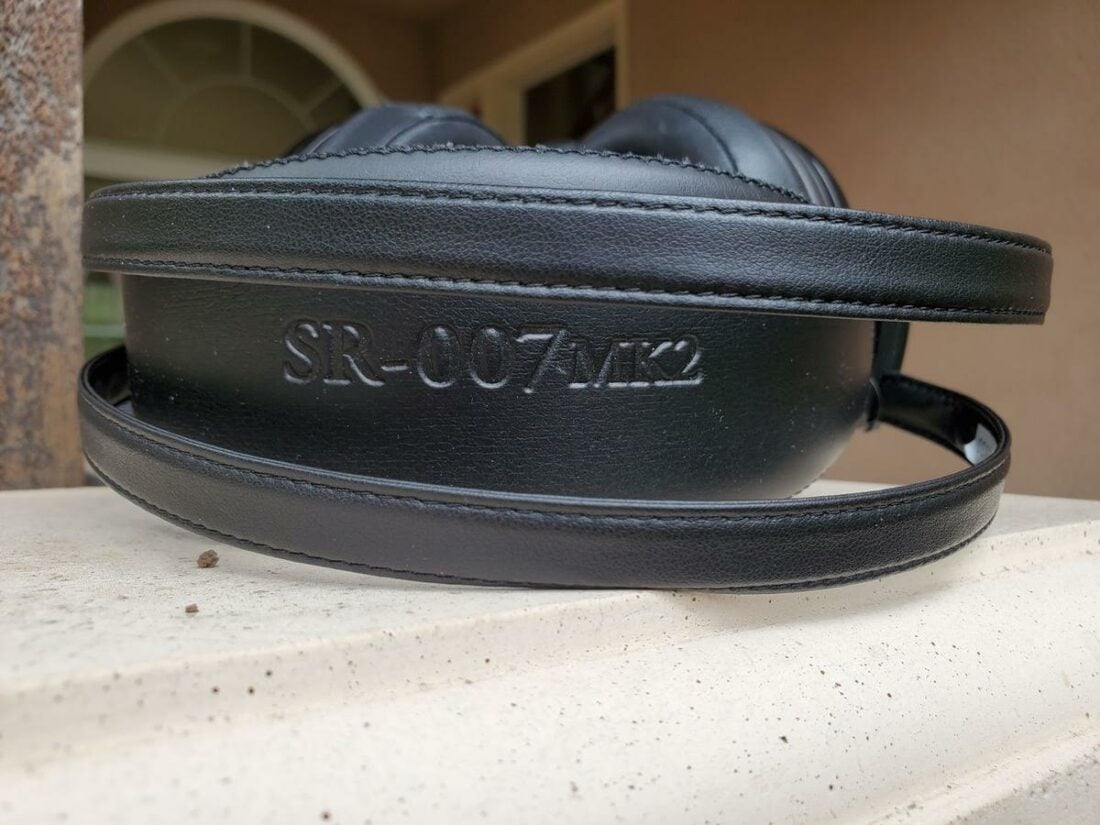
Though the SR-007MK1 midrange was fantastic in its own right, the upper mids (above ~2 kHz) were indisputably a little muted. This lent the headphones a beautifully warm tone but occasionally robbed instruments of necessary bite, rendering acoustic instruments somewhat dull.
In the current version of the SR-007MK2, the upper midrange is just a hair more prominent, and this makes a huge difference.
On one hand, they are still warm, and the upper midrange is set back relative to the lower midrange. While the SR-007 are quite versatile, classical and acoustic music can sound muted, especially if one is not used to the SR-007’s sound.
Unlike headphones like the Audeze LCD-2, though, the SR-007 are only just on the warm/muted side of neutral, bridging the gap between warmth and realism.
The SR-007 (both versions) boast the best vocal performance I’ve ever heard in a pair of headphones.
Their tonal balance and headstage allow for the perfect harmony of intimacy, grandiosity, warmth, soul, and breath.
What of the classic Stax 1-1.5kHz resonance peak? The SR-007, like all other Stax before the SR-X9000, still have this peak, but it’s rendered mostly inaudible by a careful tuning choice (or perhaps some kind of driver wizardry). It only occasionally manifests as a slight glassiness in piano timbre or throatiness in woodwinds.
Treble
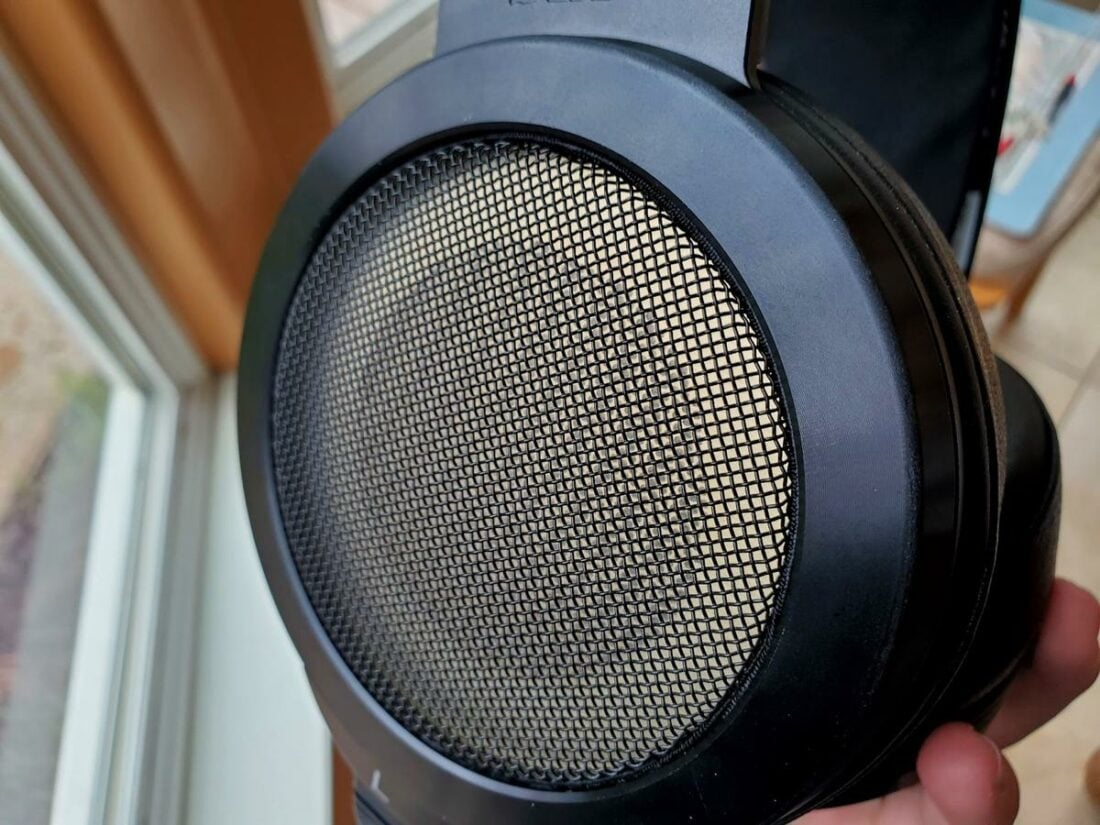
The SR-007MK1 may have been one of the greatest pairs of headphones of all time, but they weren’t perfect, and the treble was one of their few imperfections. They had a sharp peak at around 10 kHz that stuck out like a sore thumb compared to their overall warm tuning.
This issue is fixed in the SR-007MK2. The treble here is much more even, composed, and elegant.
The lower treble is warm and laid-back, fitting the SR-007’s general downward-sloped tuning. As a result, instruments may not have the “bite” they would have in a more neutral pair of headphones.
The upshot is that these headphones are very gentle and completely free of any sibilance or harshness. You can play pretty much anything through them, and it’ll never hurt your ears.
The upper treble is more prominent. Starting at 8-9 kHz and continuing upward beyond the limits of human hearing, there’s a gentle rise in volume. This is where the MK2 version find their greatest advantage over the MK1: there is no harshness here, nothing that sticks out.
Instead, the air frequency boost helps to make small details (like room ambiance, pages rustling, etc.) more accessible, but not overbearing, to the listener. It’s also why the SR-007 rarely, if ever, sound “too” warm, the way Audeze headphones like the LCD-2 often come off to me.
Technicalities
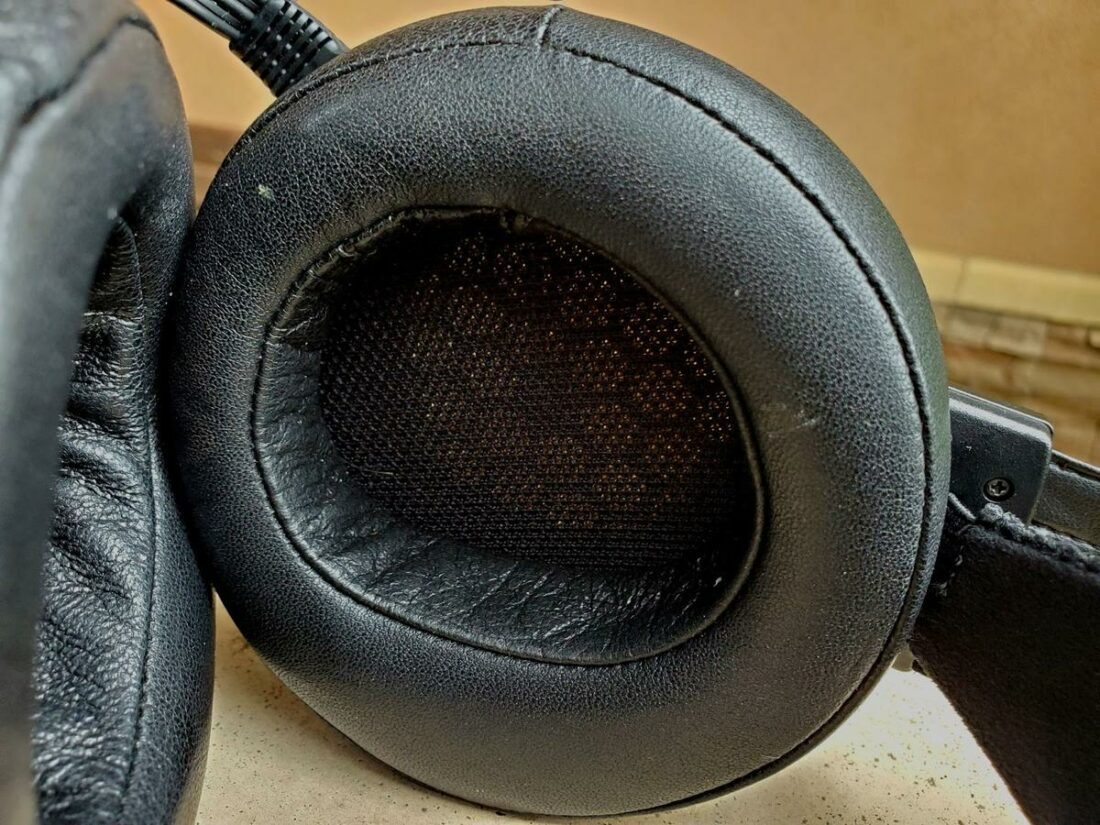
As a pair of top-tier electrostatic headphones, it goes without saying that the SR-007MK2 offer some of the finest detail that you can hear. It’s how this detail is presented that makes the SR-007 special.
While many top-tier headphones intentionally push detail to the foreground, the SR-007 take a more relaxed approach. Because of their warm sound signature, detail doesn’t sound artificially accented.
Nonetheless, all the detail in the recording is immediately accessible when one listens for it. Just like in real life, the detail is simply there.
The stereo image of the SR-007 is impeccable. It is often said that the SR-007’s headstage is rather small, which is true to an extent. Compared with the two other kilo-buck headphones at my disposal, the Hifiman Arya Organic and the ZMF Auteur Classic, the SR-007’s stage sounds less expansive than both these headphones.
But, the SR-007 provide a perfect representation of the spatial relationship between instruments. It’s hard to create a pair of headphones with perfect center imaging; things are usually too diffuse or indistinguishable. The SR-007 allow for extremely fine gradations of spatial distinction between instruments in the center.
Also, the soundstage has a very nice frontal projection. The stage does not extend far beyond the head, but it is very realistically shaped compared to most headphones, like a tiny room that extends just beyond the head.
The only area where the SR-007 may lack slightly is dynamic resolution and aggression. When amplified well, they have more dynamic pep than most electrostatic headphones, but the overall presentation is gentle and relaxed, not aggressive or exhilarating.
Where to Buy
Conclusion
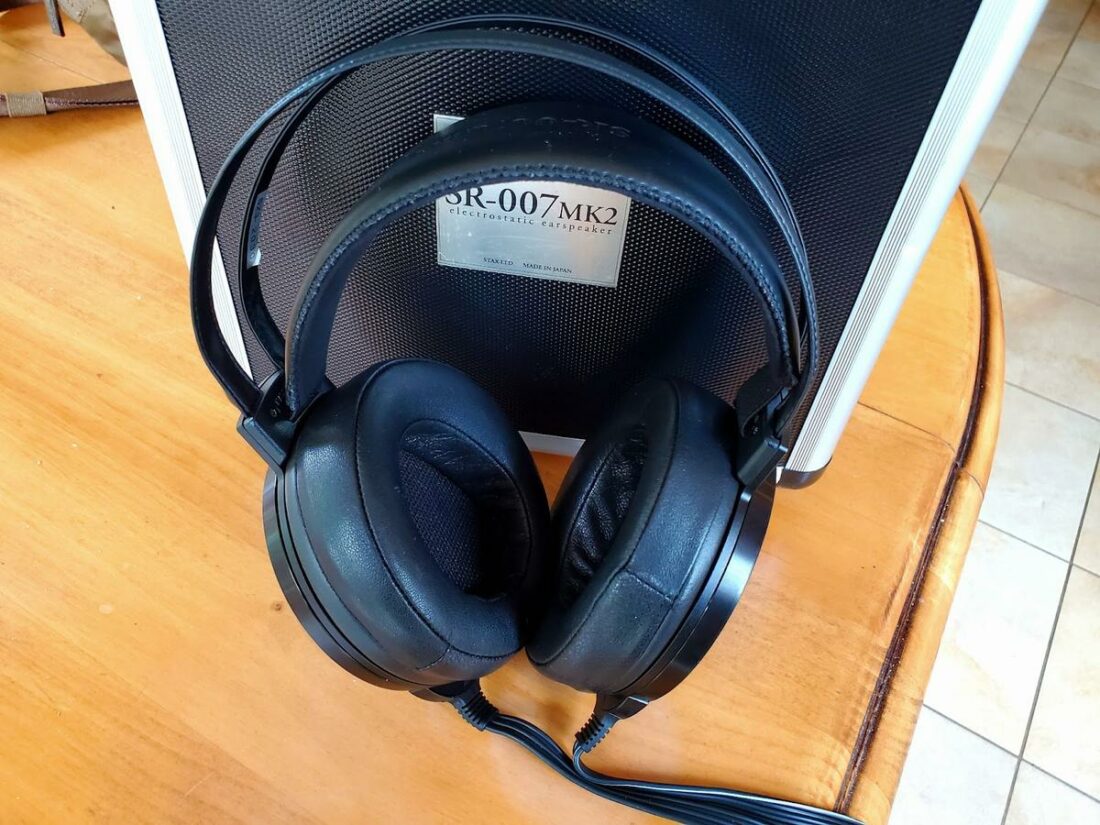
Although I haven’t heard all summit-fi headphones in existence, I’ve been afforded the opportunity to listen to many fabulous headphones. The SR-007 (both versions!) are my favorite.
A winning combination of incredible resolution, perfect imaging, and stellar instrument separation with a lovely, warm, intimate timbre and presentation make them a singular product on the market – oft-imitated, rarely matched.
That’s reflected in their staying power: the world has forgotten most flagship designs from the 90s, but the SR-007 are still here and show no signs of going out of production soon.
I’d argue that the age of the SR-007’s design is the only reason for their low price compared to other top-tier headphones. If released today, the SR-007 could easily command as much as twice their current MSRP.
Those who are interested in buying a pair must, of course, contend with the reality that a very powerful amplifier is a must.
The out-of-production SRM-717 (the current successor is the more expensive SRM-700S) is the typical recommendation for a starter amplifier, which should be sufficient for most use cases. But some users have gone so far as to spend over twice the price of the headphones on a matching amplifier.
In any case, the Stax SR-007MK2 are truly wonderful. Easiest 5-star rating I have ever given.
